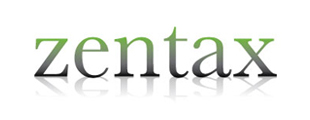How to claim through the Coronavirus Job Retention Scheme
You’ll need to claim for:
- 80% of your employees’ wages (even for employee’s on National Minimum Wage) - up to a maximum of £2,500. Do not claim for the worker’s previous salary.
- minimum automatic enrolment employer pension contributions on the subsidised wage
You can choose to top up your employee’s salary, but you do not have to. Employees must not work or provide any services for the business while furloughed, even if they receive a top-up salary.
Grants will be prorated if your employee is only furloughed for part of a pay period.
Claims should be started from the date that the employee finishes work and starts furlough, not when the decision is made, or when they written to confirming their furloughed status.
The way you work out your employees’ wages is different depending on what type of contract they’re on, and when they started work.
Employees whose pay varies
If the employee has been employed for 12 months or more, you can claim the highest of either the:
- same month’s earning from the previous year
- average monthly earnings for the 2019-2020 tax year
If the employee has been employed for less than 12 months, claim for 80% of their average monthly earnings since they started work.
If the employee only started in February 2020, work out a pro-rata for their earnings so far, and claim for 80%.
Employer National Insurance and Pension Contributions
You’ll still need to pay employer National Insurance and pension contributions on behalf of your furloughed employees, and you can claim for these too.
You cannot claim for:
- additional National Insurance or pension contributions you make because you chose to top up your employee’s salary
- any pension contributions you make that are above the mandatory employer contribution
Past Overtime, Fees, Commission, Bonuses and non-cash payments
You can claim for any regular payments you are obliged to pay your employees. This includes wages, past overtime, fees and compulsory commission payments. However, discretionary bonus (including tips) and commission payments and non-cash payments should be excluded.
Normally, an employee cannot switch freely out of a salary sacrifice scheme unless there is a life event. HMRC agrees that COVID-19 counts as a life event that could warrant changes to salary sacrifice arrangements, if the relevant employment contract is updated accordingly.
To claim, you will need:
- your ePAYE reference number
- the number of employees being furloughed
- the claim period (start and end date)
- amount claimed (per the minimum length of furloughing of 3 consecutive weeks)
- your bank account number and sort code
- your contact name
- your phone number
You will need to calculate the amount you are claiming. HMRC will retain the right to retrospectively audit all aspects of your claim.
Claim
You should make your claim using the amounts in your payroll - either shortly before or during running payroll. Claims can be backdated until the 1 March where employees have already been furloughed.
If appropriate, worker’s wages should be reduced to 80% of their salary within your payroll before they are paid. This adjustment will not be made by HMRC.
Minimum furlough periods
Any employees you place on furlough must be furloughed for a minimum period of 3 consecutive weeks. When they return to work, they must be taken off furlough. Employees can be furloughed multiple times, but each separate instance must be for a minimum period of 3 consecutive weeks.
After you’ve claimed
HMRC will check your claim, and if you’re eligible, pay it to you by BACS to a UK bank account.
You must pay the employee all the grant you receive for their gross pay, no fees can be charged from the money that is granted.
When your employees are on furlough
You cannot ask your employee to do any work that:
- makes money for your organisation
- provides services for your organisation
They can take part in volunteer work or training.
Employee taxes
Your employees will still pay the taxes they normally pay out of their wages.
This includes pension contributions (both employer contributions and automatic contributions from the employee), unless the employee has opted out or stopped saving into their pension.
- Statutory Sick Pay
- maternity and other parental rights
- rights against unfair dismissal
- redundancy payments
Grants cannot be used to substitute redundancy payments. HMRC will continue to monitor businesses after the scheme has closed.
Working for a different employer
If contractually allowed, your employees are permitted to work for another employer whilst you have placed them on furlough.
For any employer that takes on a new employee, the new employer should ensure they complete the starter checklist form correctly. If the employee is furloughed from another employment, they should complete Statement C.
Tax Treatment of the Coronavirus Job Retention Grant
Payments received by a business under the scheme are made to offset these deductible revenue costs. They must therefore be included as income in the business’s calculation of its taxable profits for Income Tax and Corporation Tax purposes, in accordance with normal principles.
Businesses can deduct employment costs as normal when calculating taxable profits for Income Tax and Corporation Tax purposes.
Return to homepageWorkshops
In depth information
of a particular subject
Presentations
Overview of subject
to a large audience
1-2-1's'
Individual tuition
of a certain subject
